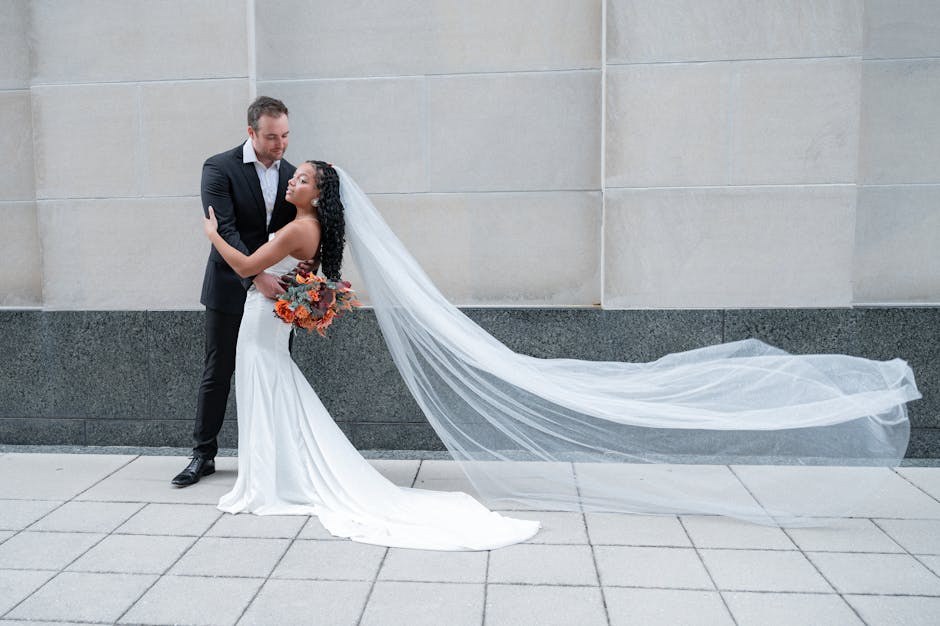There’s a difference between playful banter and the kind of attention that makes your skin crawl – and the split often shows up the moment someone tosses out a cheesy opener. When a stranger’s charm offensive leans more offensive than charming, you don’t owe them your time. What you do have, however, is language. With a handful of witty comebacks ready to go, you can keep your cool, protect your boundary, and turn an awkward interaction into a short, harmless moment that you steer rather than endure.
Before we dive into examples, let’s set the scene. A pickup line is simply an icebreaker with romantic intent. Sometimes it’s simple and sincere; other times it’s a groan-worthy rhyme delivered with a smirk. People reach for them because they feel risky approaching someone cold – and a canned line feels like a shield. You don’t have to play along. The point of your response is to choose what happens next: end the exchange, neutralize it with humor, or redirect. That’s where witty comebacks shine.
Think of the history of these openers as a long parade of trial and error. From old-timey quips to modern memes, the goal has stayed the same: grab attention fast. The trouble is that recycled lines usually flatten the person they’re aimed at. A light, confident answer can flip that dynamic immediately. Witty comebacks let you keep the conversation on your terms while signaling that you see through the routine.

Three quick principles help in the moment. First, keep your posture and tone calm – clipped phrases and steady eye contact say more than volume. Second, aim for brevity. A short line lands cleaner than a monologue. Third, decide your outcome before you speak: exit, deflect, or tease back. When you know your aim, witty comebacks stop feeling like performance and start working like tools.
If you like flirting, you can respond playfully and still steer clear of anything that makes you uncomfortable. If you’re not interested at all, your answer can be dry as dust and twice as clear. Either way, the right words can shut down lame approaches without escalating tension. Use these scenarios as inspiration – adapt the phrasing, switch the tone, and choose what helps you feel safe and in control. That’s the real power of witty comebacks.
Understanding the Setup – Why Lines Keep Coming
Pickups lean on formulas because formulas are easy to remember. Some rely on flattery, others on wordplay, and a few try to corner you into answering. Recognizing the pattern helps you reach for your own pattern: a crisp, boundary-keeping reply. When you hear something familiar, you’ll already have an exit mapped out. That’s the advantage of rehearsing witty comebacks in your head – they’re there when you need them, and you don’t burn energy thinking on the spot.

Common Openers and How to Turn Them Around
-
The dream opener. A stranger pauses, feigns surprise, and says, “I know you – you’re the girl of my dreams!” The script expects you to blush or banter. Try a clean reversal: “That’s strange. This feels more like my nightmare.” It’s tidy, not cruel, and it moves you on. Use witty comebacks like this when the line tries to cast you as a fantasy rather than a person.
-
The “Where have you been all my life?” gambit. It sounds like destiny, but it’s a shortcut to push intimacy. Reply with a life-affirming wall: “Busy living mine.” Short sentences do the heavy lifting – they’re unarguable and done. These kinds of witty comebacks keep your autonomy front and center.
-
The cozy nap suggestion. An ex or old fling hints, “I thought we were going to take a nap together.” It leans on history to blur a boundary. Counter with light dismissal and motion: “You must be tired. I’ve had coffee, so I’ll let you rest.” You decline without drama and reclaim your schedule. Witty comebacks are especially useful when familiarity is used as pressure.

-
The astrology probe. “What’s your sign?” can be playful, but it often functions as a gateway to stereotyping. Flip the literalism: “Do not enter.” Or pick another classic sign – “Beware of dog,” “High voltage” – and smile. This kind of humor keeps space while staying polite. It’s a reminder that witty comebacks can be both safe and sharp.
-
The breathless compliment. “You just took my breath away!” translates to forced romance. Answer with a gentle nudge that doubles as a hint: “Your breath is pushing me away.” A breezy delivery keeps it from sounding mean while still pointing to the problem. Practical and funny – two hallmarks of witty comebacks.
-
The missing number move. He sees you on your phone and says, “I lost my number – can I have yours?” It banks on momentum and a laugh. Return something deadpan: “Nine-one-one.” Pause. Smile once. The beat is the punchline. This is where witty comebacks protect your time by refusing the premise.
-
The “gaydar” beep. Someone assumes your orientation and tries to turn it into a joke. A crisp boundary works best: “I don’t hear anything – my ears are straight.” It’s clear, not cruel, and it stops the bit from continuing. In situations that hinge on assumptions, witty comebacks give you the steering wheel back.
-
The doctor’s note. “My doctor says I’m low on Vitamin U.” It’s a rhyme wrapped in a lab coat. Lean into theatrical menace for comedic effect: “My psychiatrist says I might -” hold eye contact for a beat “- murder a line like that.” The pause sells the joke, not the threat. Delivered lightly, these witty comebacks deflate the shtick without inviting a second round.
-
The empty seat shuffle. “You look lonely. Is this seat taken?” and then he sits without waiting. Give a consequence: “That one isn’t. But this one will be if you do.” Gesture to your chair and relocate. Movement enforces the message. Kinetic, simple, effective – proof that witty comebacks can be actions as much as words.
-
The eye exam. “There’s something wrong with my eyes – I can’t take them off you.” Answer with equal parts pun and boundary: “I’m having trouble with mine too. I can’t see this going anywhere.” You keep the rhythm but drop the interest. That’s the tone sweet spot for witty comebacks: playful language, firm content.
-
The “nice girl” angle. “What’s a nice girl like you doing here?” implies you don’t belong. Hand it back: “I was about to ask you the same thing.” It tilts the frame without inviting debate. When messages carry hidden judgments, witty comebacks unmask the assumption and move on.
-
The instant soulmates pitch. “Do you believe in love at first sight, or should I walk by again?” Give him a sport he won’t win: “Go ahead – I need target practice.” The image lands, the conversation ends. These witty comebacks are not about cruelty; they’re about closure with a wink.
-
The classroom callback. “Didn’t we have a class together? I’m sure we had chemistry.” Keep the school theme and assign his role: “It wasn’t chemistry; it was history. Which is where you should be.” The line leaves no open door. When pun meets pun, witty comebacks make the grade.
How to Choose Your Tone in the Moment
You don’t have to deliver every response like a stand-up routine. Sometimes the best approach is silence and a pivot; other times, a single sentence with a hint of humor lowers the temperature. Calibrate based on your safety and comfort. If the person seems drunk or pushy, prioritize a fast exit. If the environment is crowded and loud, a hand wave and “No, thanks” can be safer than a quip. Witty comebacks are a menu, not a rulebook – pick the option that protects your energy.
Humor styles vary. Dry wit feels polite but distant. Deadpan humor communicates control. Hyperbolic jokes – the “murder a line like that” style – should be played obviously for laughs, not as threats. And if your goal is total disengagement, go minimal. The leaner the sentence, the clearer the boundary. When used thoughtfully, witty comebacks reinforce the idea that your time and attention are yours to allocate.
Polite Deflections When You Don’t Want to Engage
-
The compliment redirect. If someone leads with extravagant praise, you can acknowledge without rewarding. “That’s kind. I’m not interested.” No apology required. Short, neutral lines like this are cousins to witty comebacks – they’re simple tools for graceful exits.
-
The schedule shield. “I can’t – I’m on my way out.” Step away. If they press, repeat the sentence and keep moving. Repetition is powerful because it refuses the tug-of-war. While not a joke, it lives in the same family as witty comebacks: efficient and self-protective.
-
The redirect to nowhere. “You can leave your line at the bar.” Accompanied by a glance toward the counter, it unhooks you from the exchange and gives you a literal focal point for departure. Physical redirection pairs well with witty comebacks when the environment is chaotic.
When You Want to Play – Without Paying a Cost
Sometimes flirting back feels fun – as long as it stays respectful. You can meet silliness with silliness and still guard your boundaries. If someone says, “You’re the girl of my dreams,” you could grin and say, “Then it’s time to wake up.” If they ask your sign, reply, “Yield.” The goal is to keep your power while enjoying the rhythm. That’s what witty comebacks do: entertain you first, and only then anyone else.
Pair playfulness with exit signals. Touch your bag strap, turn your shoulders slightly away, or shift your stance toward your friends. Body language clarifies what words imply. If they miss the cue, return to a firmer line: “Not interested.” There’s no rule that says once you’ve teased back, you owe another round. Witty comebacks give you the option to pivot at any point.
Protecting Your Energy in Crowded Spaces
Bars, concerts, parties, and festivals share the same challenge: noise and proximity. A crisp phrase that doesn’t invite follow-up is your friend. Keep it visible and audible – chin up, voice steady, hands free. If someone tries the empty-seat routine, stand and switch locations. If a group encourages a friend to try a line, talk to the group rather than the instigator: “He’s practicing; I’m passing.” That one sentence functions like many witty comebacks at once – a joke, a boundary, and a signal to the room.
When alcohol is involved, escalation can happen quickly. Prioritize an exit over a perfect quip. If a line feels mocking or aggressive, skip humor entirely. “No.” Then move. Humor is a spice, not the meal. The strength of witty comebacks lies in choice – you decide whether to use them at all.
Language Tricks That Keep You in Charge
-
Mirror and flip. Take the structure of their line and swap the emphasis. “Where have you been all my life?” becomes “Away from conversations like this.” The familiarity makes your point land faster. This mirroring technique fuels many witty comebacks without sounding rehearsed.
-
Literal answers. If someone asks for your sign, give an actual street sign. If they claim love at first sight, say, “Then blink.” Literalism creates humor while closing the door. It’s one of the most flexible bases for witty comebacks because you can tailor it to any setting.
-
Timeboxing. “I have ten seconds. You just used them.” Count to three and walk. It’s cheeky and final. Concision like this is what makes witty comebacks carry so much weight with so few words.
Respecting Yourself Without Performing for Anyone
Not every encounter deserves your best material. You’re not a stage; you’re a person deciding where to spend attention. Some nights, “No, thanks,” is the whole script. Other nights, you’ll find yourself trading lines just for the sport of it. Either way, the goal is the same: leave with your sense of self intact. That’s why having a few witty comebacks in your pocket feels so relieving – they’re reminders that you can protect your boundary with a smile.
Keep in mind that silence is also a full sentence. A raised eyebrow, a half-turn, a step away – these cues often work faster than syllables. If someone ignores clear messages, escalate your clarity, not your volume: “Stop.” Then enlist a friend, a bartender, or security if needed. Safety outranks style. Use witty comebacks when they serve you; switch to direct language when they don’t.
Mix-and-Match Lines You Can Adapt Anytime
“That’s flattering. I’m off to meet my friends.” (compliment acknowledged, exit secured – a cousin to your sharper witty comebacks)
“You rehearsed that. I’m not your audience.” (punctures performative charm without inviting debate; aligns with the spirit of witty comebacks)
“Wrong script, wrong person.” (refuses the premise; as efficient as the quickest witty comebacks)
“Enjoy your night – over there.” (sets distance with a smile, same function as many witty comebacks)
Bringing It All Together
You can move through the world flirting when you want and bowing out when you don’t. Having responses ready doesn’t make you cynical; it makes you prepared. The next time someone tries the dream shtick, the history-class pun, the emergency number gag, or a fortune-teller routine, you’ll already know how to answer – or how not to answer at all. Equip yourself with a small repertoire, practice the delivery under your breath, and keep your exit vector clear. When the moment arrives, those witty comebacks will feel less like a performance and more like a habit that keeps you safe, steady, and entirely yourself.
And if you’re genuinely enjoying the exchange, let the other person earn the right to stay in the conversation with real curiosity – questions about your interests, your ideas, your stories. Empty lines belong in a sketch; your life deserves better material. Until someone brings it, lean on your best witty comebacks, enjoy the laugh they give you, and walk toward the people who show you respect without needing a script.